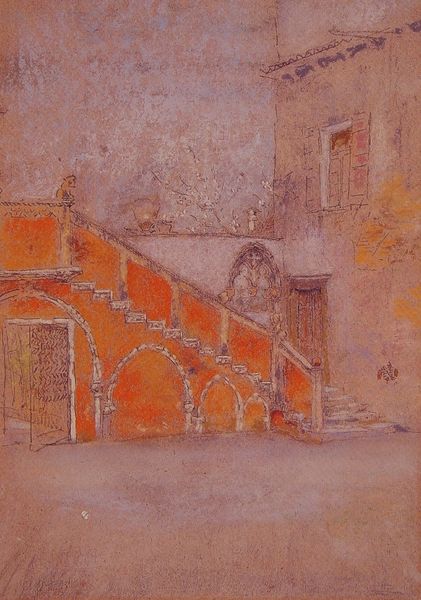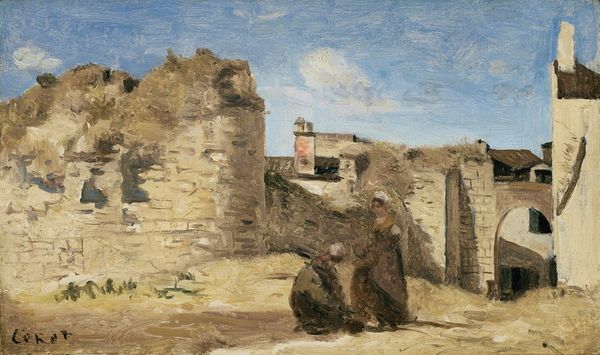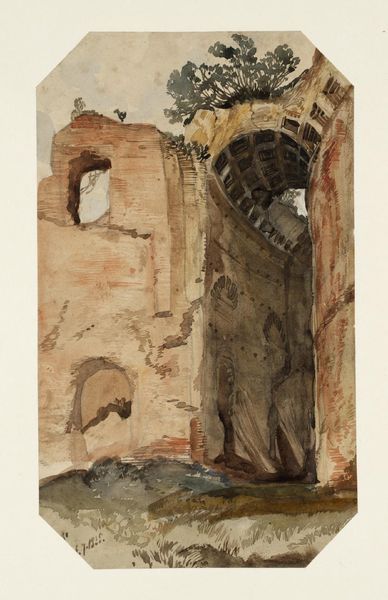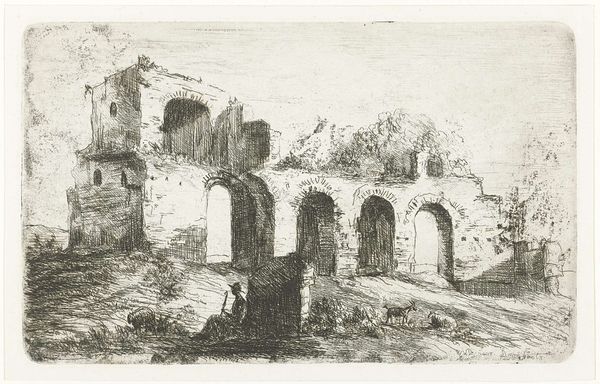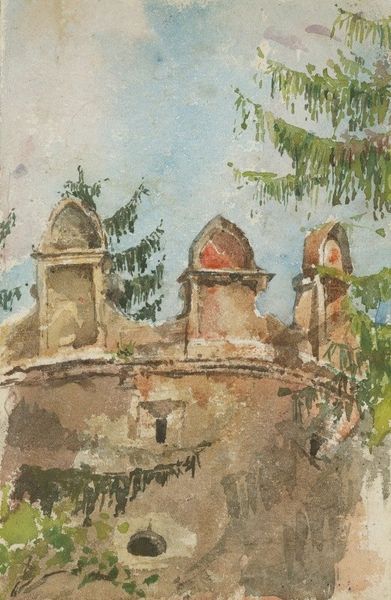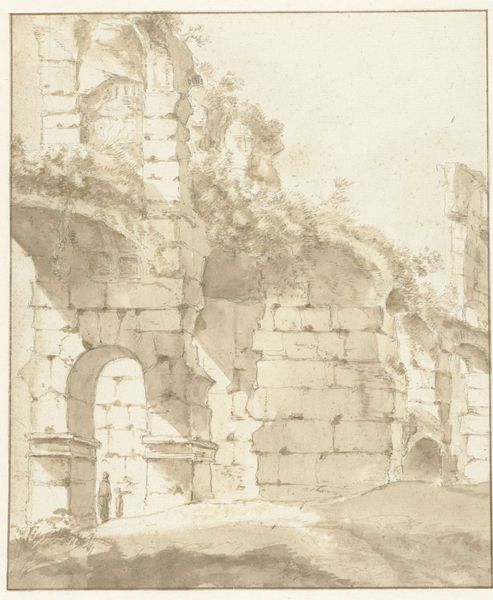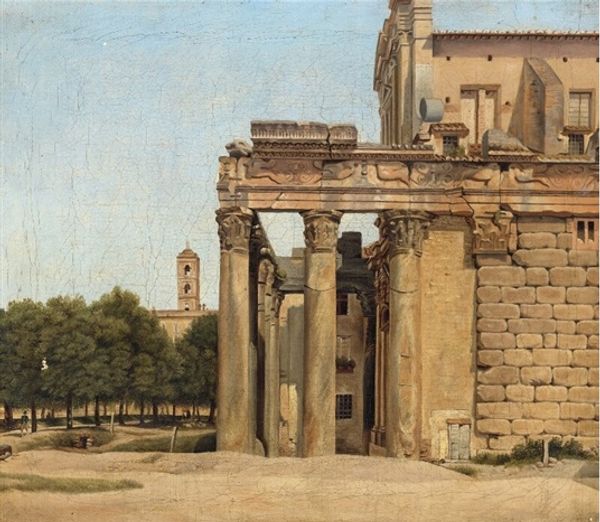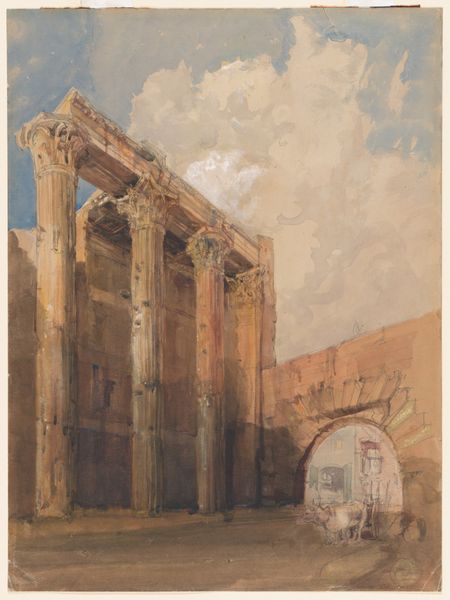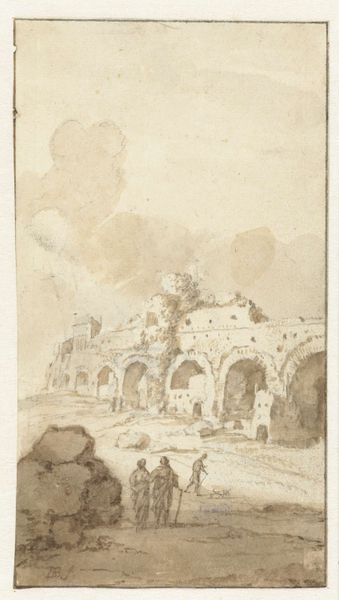
#
abstract painting
#
landscape
#
impressionist landscape
#
possibly oil pastel
#
oil painting
#
underpainting
#
naturalistic tone
#
seascape
#
painting painterly
#
watercolour illustration
#
watercolor
Copyright: Public Domain: Artvee
Editor: This is "The Colosseum" painted by Thomas Cole in 1832, and it looks like it's an oil painting, maybe even watercolour, judging by the soft edges. It’s quite evocative, almost romantic. There’s this incredible sense of scale, but also decay, especially with the ruined archway in the foreground. What strikes you when you look at it? Curator: The painting commands attention through its compositional structure. Notice how the Colosseum isn't presented in its entirety, but rather as a fragmented mass. Cole meticulously juxtaposes textures – the rough, crumbling stones against the relatively smooth expanse of the upper wall. Are you observing the directional brushstrokes? Editor: Yes, I see how the brushstrokes vary; they seem more chaotic and layered in the foreground ruins, then become more linear following the upper structure, as if he’s deliberately contrasting order and chaos. Curator: Precisely. Consider this interplay not merely as a representational choice, but as a comment on time and the inevitable erosion of even the grandest structures. The light, predominantly muted browns and ochres, unifies the composition. However, Cole subtly introduces cooler tones in the shadows to amplify depth. Can you identify how these color choices contribute to the overall mood? Editor: I see how those cooler tones really enhance the feeling of depth, giving a slightly melancholic feeling. It is like a wistful observation of history. I guess I had initially focused on its aesthetic appeal without diving deeper into the more theoretical ideas within the artistic components. Curator: Precisely. Through form and colour, Cole’s painting transcends being a mere depiction; it becomes a meditation on the dialectic between past glory and present ruin, on time. Editor: Thanks so much. That’s definitely shifted my thinking. Curator: It's been enlightening for me as well. The close viewing allows for more thorough contemplation on time, beauty, and inevitable erosion.
Comments
No comments
Be the first to comment and join the conversation on the ultimate creative platform.

